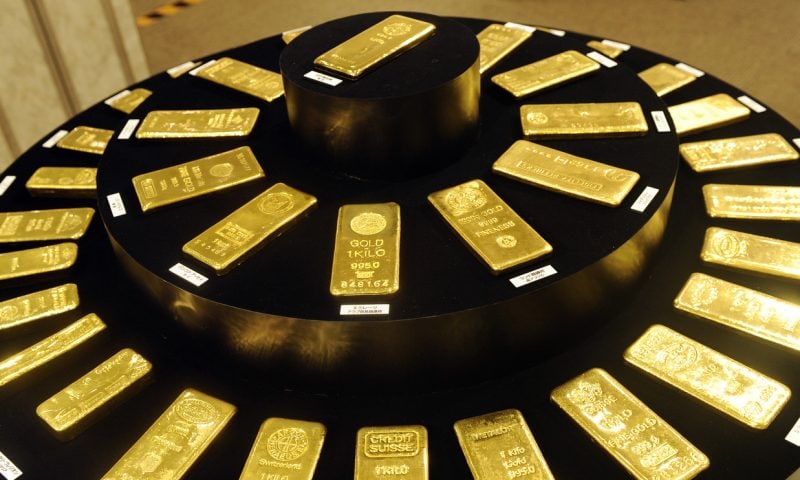Gold futures ended lower on Thursday, finding haven-related interest in short supply as investors eye moves in the dollar and in global equities, setting prices up for a loss on the week.
The metal pared some of its earlier declines after a report on weekly jobless claims showed that the number of Americans seeking unemployment benefits in the latest week held nearly steady at 1.5 million, while the number of workers unemployed remains elevated, despite the U.S. economy showing signs of recovery from the COVID-19 pandemic.
The level of new weekly jobless claims fell below 2 million in recent weeks from a peak of 6.9 million in late March, according to the Labor Department. The recent level still is well above the highest week on record before this year of 695,000 in 1982, The Wall Street Journal reported.
U.S. benchmark stock indexes were trading mixed in Thursday dealings as gold futures settled. Still, risk appetite may be waning, as the number of new coronavirus cases rises in at least nine U.S. states, prompting concerns about possibly re-implementing lockdowns to limit the spread.
Against that backdrop, August gold GCQ20, 0.18% fell $4.50, or 0.3%, to settle at $1,731.10 an ounce on Comex. Gold futures have been trading in a $1,670 to $1,770 range for about two months despite a sharp fall in that time for the U.S. dollar against major currencies. Week to date, prices were down roughly 0.4%, according to FactSet data.
“Price moves in gold and U.S. dollar index suggest that traders are sitting on cash,” said Chintan Karnani, chief market analyst at Insignia Consultants. “They are booking profit on every major technical hurdle and buying on major short term support. Hence the range trade in gold,” he told MarketWatch.
On Thursday, the gold market actually saw solid price action, “masked for U.S. traders by this risk-off strength in the dollar,” said Adrian Ash, director of research at BullionVault. The ICE U.S. Dollar Index DXY, -0.03% was trading 0.3% higher, on track for a weekly climb.
“Gold priced in the euro has now rallied back to last weekend’s level, and it’s trading at two-week highs in the British Pound after the Bank of England expanded its QE another 15%,” said Ash.
Precious metals have benefited from monetary efforts by central banks to contain the damage wrought by the viral outbreak that has infected about 8 million people globally. The Bank of England on Thursday said it was expanding its asset purchases to stimulate its economy by £100 billion, or $125 billion, to £745 billion.
Expect next week to see a “return to basics,” to general worries investors face, said George Gero, managing director at RBC Wealth Management, in emailed commentary. Those include China-U.S. tariffs, digital tax worries in the Eurozone, concerns surrounding India-China and North Korea, elections worries in U.S., political headlines and economic headlines, he said.
“All this may add buyers next week to gold—on [the] way to $1,800,” said Gero.
In other Comex metals action, July silver SIN20, 0.10% edged 27 cents, or 1.5%, lower to $17.508 an ounce.
July copper HGN20, 0.70% shed 0.06% to $2.588 an ounce. July platinum PLN20, 0.23% declined by 3.1% to $812.20 an ounce and September palladium PAU20, -0.55% ended at $1,908.60 an ounce, down 0.9%.

